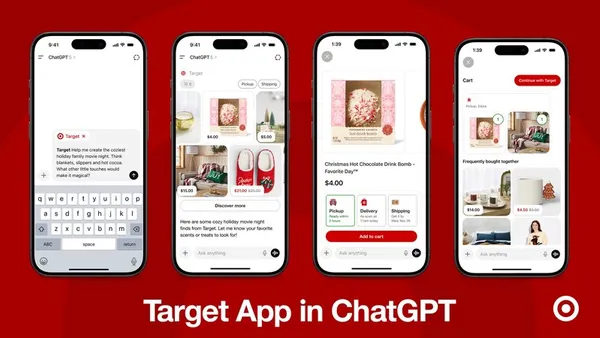Dive Brief:
- Lyft is implementing in-app advertising to support a media network offering that launched last year, according to a blog post.
- Contextually targeted ads will be served to riders in the U.S. and Canada as they match with a driver, check their driver’s arrival time and track their journey in transit.
- Bilt Rewards, Audible and Universal Pictures are among the early brand partners using the feature. Lyft has also teamed with Kantar Brand Lift Insights to help advertisers measure metrics like brand awareness and association and purchase intent.
Dive Insight:
Lyft is seeking to attract more advertising dollars by promoting its rides as a moment for brands to reach highly engaged audiences. The ride-hailing firm claims that passengers check their phone, on average, nine times during a typical trip, presenting multiple opportunities to get across a sponsored message.
Campaigns can also be tailored based on the location where the rider is heading. Someone going to a destination near a movie theater might get served a message for a new film release while one on the way to a shopping mall might receive a discount code for a nearby store. This approach might appeal to companies seeking to catch consumers in the moment and spur impulse purchases.
At launch, advertisers using Lyft’s in-app ads will receive “100% share of voice,” according to the blog post. That means that they don’t have to worry about other brands stealing attention away from their campaigns.
Ad-serving and programmatic aspects of the feature will be powered by Rokt, which uses machine-learning technology to analyze troves of transactional data. Rokt has also been a key partner for Uber as it attempts to shore up its advertising business.
The introduction of in-app ads builds on the debut of Lyft Media last year. Initially, the ad network carried digital rooftop screens, called Lyft Halos, and in-car tablets. Lyft has expanded the availability of those options in tandem with the in-app ads rollout and also now serves ads at on-street bike-share stations in four markets.
Lyft has promoted the monetization of its media assets as not just a benefit to brands, but also drivers. The announcement stated that drivers with ad-enabled tablets in their vehicles who give at least 60 rides per week see their tips increase by more than 10%, on average, compared to drivers who don’t have a tablet.
Lyft’s bets on advertising come as the company fights to gin up more revenue and win market share from competitor Uber. Uber has trumpeted its advertising gains, with the goal of generating more than $1 billion in revenue from the segment by next year. In June, Uber struck a deal with Omnicom Media Group that weds its data insights with the agency’s to deliver more targeted campaigns.
Uber’s ad network has about 400,000 advertisers and expects a revenue-run rate of more than $650 million in 2023, executives said on a recent earnings call. Lyft, which is a smaller company, has been cutting jobs and trying to recenter focus on core growth drivers under new CEO David Risher, who took the reins early this year.














